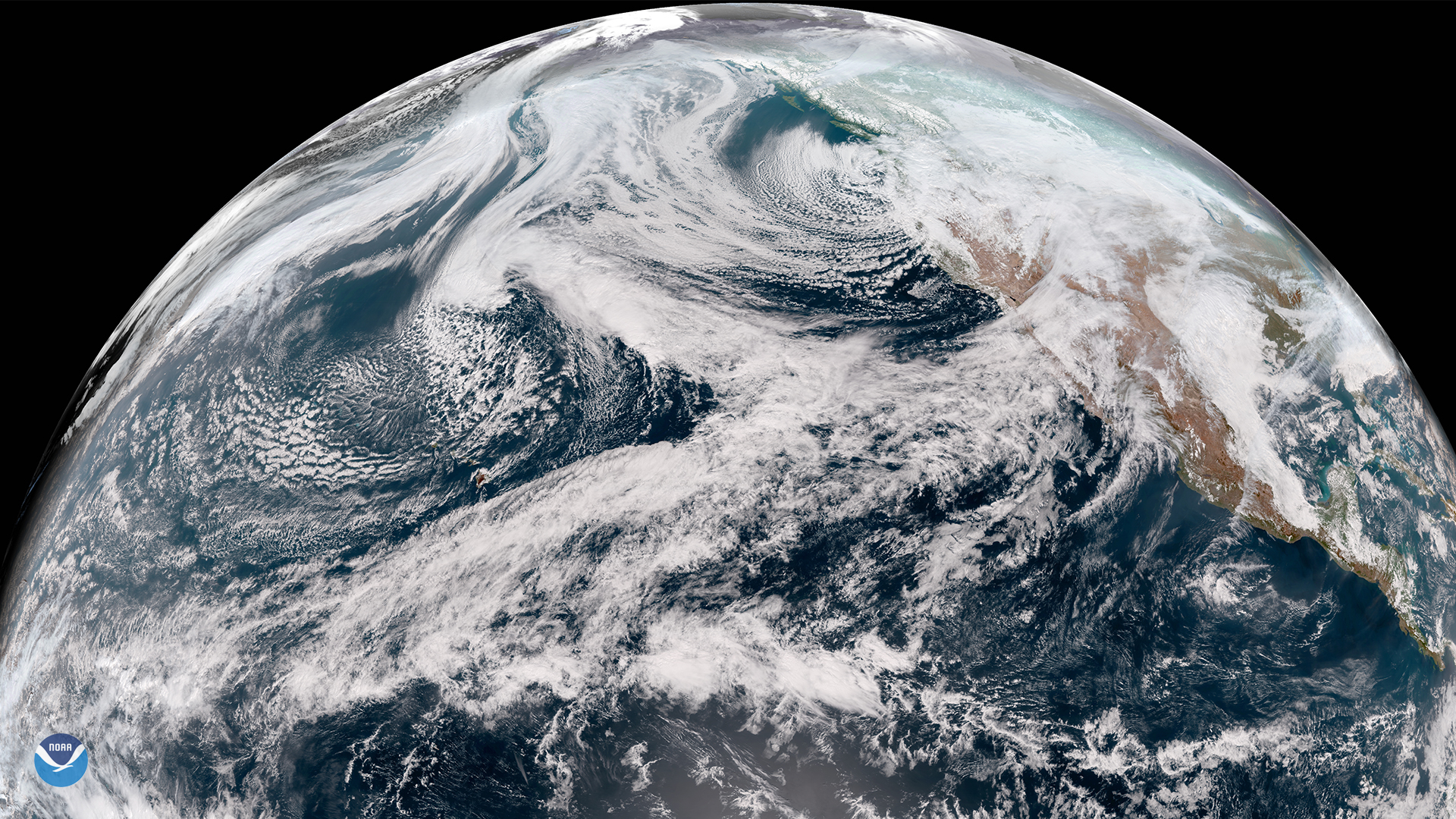U.S. military needs for data such as cloud coverage and theater weather imagery currently cannot be met by the commercial industry and likely will require significant new investment
WASHINGTON — The U.S. Space Force is considering buying weather data services from commercial satellite operators. The military specifically wants cloud characterization data and theater weather imagery to supplement data collected by its own sensor satellites. This need currently cannot be met by the commercial industry and likely will require significant new investment, industry executives told SpaceNews.
The military’s interest in purchasing weather data as a service was laid out in a request for information posted Jan. 14 by the Space Force’s Space Systems Command. Responses are due Feb. 24.
“It’s a chicken-and-egg problem,” said John Fisher, president of Brandywine Photonics, a company that won an Air Force Small Business Innovation Research contract in 2018 to develop a theater weather imaging and cloud characterization sensor.
“Multiple companies can provide a technical solution that can meet the requirements, but it would require a significant investment to put up the capability to provide the service on orbit,” he said. “Investors want to know that Space Force will buy the data before building the sensors with special requirements.”
DoD has unique needs
The Space Force in 2020 selected three companies — Raytheon, General Atomics and ASTRA Space — to develop electro-optical infrared (EO/IR) weather satellite concepts. It plans to select one or more vendors to build a system in low Earth orbit for the Defense Department. These EO/IR satellites need to be deployed by 2025 before the military’s Defense Meteorological Satellite Program (DMSO) satellites run out of fuel.
Separately, the Space Force wants to start buying commercial EO/IR weather data as a service in 2025 to supplement these future satellites it plans to buy. The Space Force also may provide “limited upfront funding for the development of the service.”
David Crain, CEO of space startup ExoTerra Imaging, said the RFI sends a demand signal and could lead to attractive business opportunities for the industry, although there are still many questions the government will need to answer about its strategy and funding to buy weather data as a service.
Within the commercial space market for climate and weather data, the Defense Department is a narrow niche, executives said, and it would be difficult for businesses to justify investing in a constellation unless they can identify other customers for the service or the Space Force makes a long-term commitment to buy services.
Cloud characterization and theater weather imagery are top priorities for DoD but “I don’t know of any company currently doing this as a commercial service,” said Crain.
Cloud characterization data — measurements that help determine cloud cover and temperatures — and theater weather imagery are used to schedule intelligence satellites’ imagery collections, to plan aircraft sorties, search and rescue missions, airdrops and other activities impacted by weather. Polar-orbiting weather satellites operated by the National Oceanic and Atmospheric Administration (NOAA) support some of DoD’s needs but do not fly the early morning orbit like DMSP. That orbit is a specific gap that DoD has to fill.
There are many commercial companies that could build this capability if the Space Force offered incentives such as upfront funding and long-lead contracts, said Crain. He suggested that another potential customer for EO/IR weather data providers would be Earth observation companies that collect optical imagery. These companies need near real-time forecasts of cloud coverage so they know where to position their satellites.
Using radar to image clouds
Although the Space Force is asking for EO/IR data, weather startup Tomorrow.io argues that radar satellites also could meet military needs for cloud and weather imagery.
The venture-funded company last year won a $19.3 million contract from the U.S. Air Force to support the deployment of a radar-equipped weather satellite constellation. Rei Goffer, co-founder and chief strategy officer, said the first of a planned 32-satellite constellation is projected to launch later this year.
Under the Air Force contract, Tomorrow.io will provide data as a service to the military and other governmental agencies, including NOAA.
Goffer said radar is an obvious fit for military weather data collection because it can see through clouds. “We came to the Air Force about a year ago and told them we’re going to build a radar system and they gave us nearly $20 million to go show it,” he said. If the system is successful, “we will get a data-as-a service contract immediately.”
The Space Force does have a clear need for cloud characterization data, but EO/IR is “just one solution,” said Goffer. The company also is lining up commercial customers for its space radar-based weather service, he said, including airlines and maritime operators that want coverage over the oceans.
Several commercial companies sell weather data to NOAA but the agency has different requirements than the military. NOAA in November released an RFI seeking information from industry providers, and it is currently buying commercial radio occultation data as a service from satellite operators GeoOptics and Spire Global.
Radio occultation is a technique that uses GPS signals to measure properties of the Earth’s atmosphere from space.
Conor Brown, director of federal sales at Spire, said the company does not provide the EO/IR data the Space Force is seeking but will be watching future “on ramp opportunities to deliver weather data as a service.”
“There is obviously a large barrier to entry for these exquisite instrumentation and sensor types that they’re looking for,” said Brown. “Industry has the choice to either pursue prototype funding through the government or go out and make that investment on their own.”
